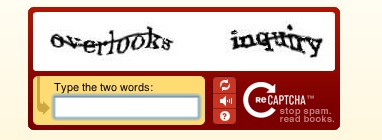As of April 2012, 53% of American adults ages 65 and older use the internet or email. Though these adults are still less likely than all other age groups to use the internet, the latest data represent the first time that half of seniors are going online. After several years of very little growth among this group, these gains are significant.
Pew Research Center
Within that 53% of American adults of at least 65 years of age, 70% use the Internet on a daily basis.
Since these statistics were recorded in 2012, it is believed that the numbers have risen significantly. It is important for web designers and developers to factor this information into their designs to cater to this group of regular Internet users in these ways:
Text Size
Select a larger font and allow the text to be resized up to 200% by the user without creating an issue with the function of the website.
Legible Text Style & Layout
Create a site that is easy to read by selecting a legible font, spacing your lines accordingly, and keeping your lines short.
Contrast & Color
While some color and contrast looks great to young eyes, older eyes can lose the ability to see text on a high-contrast page. At a minimum, your contrast ratio should be 4.5:1 with the involvement of images and text.
Multimedia
With older adults, eyesight and/or hearing can rapidly decrease. By offering multimedia with subtitle options as well as visual and audible, your website visitor will be able to enjoy the presentation.
Text-to-Speech
Some elderly people rely upon speech synthesis software when browsing websites. To make your website accessible, you’ll want to use more text instead of images, especially on call-to-action buttons.
CAPTCHA
Completely Automated Public Turing tests are used to decipher a live human user, as opposed to a machine spammer by requiring the user to type in the displayed text. As you can see below, the text is very difficult to read, even for those who do not suffer from vision impairments.
It is suggested to offer an audible version of CAPTCHA as a second option, but the user may have difficulties enabling the audio on their computers or have a hard time hearing it if enabled. Removing CAPTCHA from your site altogether is a much better solution, as it doesn’t deter spammers.
Links
Due to visual impairments and difficulty with mouse usage, links need to be created over more than two words, as well as providing alternative text that indicates the destination of the link. Links must be underlined and have other visual indications.
Keyboard Use
Many people aren’t able to use a mouse and rely open only utilizing a keyboard. Always allow your site to be functional by the use of keyboard navigation without a mouse. Also, it is important to allow the tab function to move onto different cells within an online form.
Distractions
It is imperative to provide the ability to pause, mute, or stop movement and sound within a website to avoid distractions from the web experience. People may not always want to watch a video on a website, but would just prefer to quietly read the article around it.
Use of Forms & Instructions/Time Limits
Sometimes websites have time limits to complete a form for a transaction; if the time limit is reached, the website will time out and the user will have to start from the beginning. Older people may have a difficult time understanding how to fill out forms to complete the transaction. Does your form require a time limit? If so, it needs to be increased.
Out of Date Software
Not everyone is going to have up to date web browsers and new computers, so your site needs to be as compatible as possible with older software. A warning message indicating that the visitor must download a newer version of a web browser will most likely result in frustration and website abandonment.
For Further Information
- Meeting the Needs of Aging Web Users
- Seniors as Web Users
- Making your Website Senior Friendly
- Designing for the Elderly




 The title itself is simple and the tagline is descriptive and interesting. It makes readers curious about what the students are saying. In short– it works.
The title itself is simple and the tagline is descriptive and interesting. It makes readers curious about what the students are saying. In short– it works.

